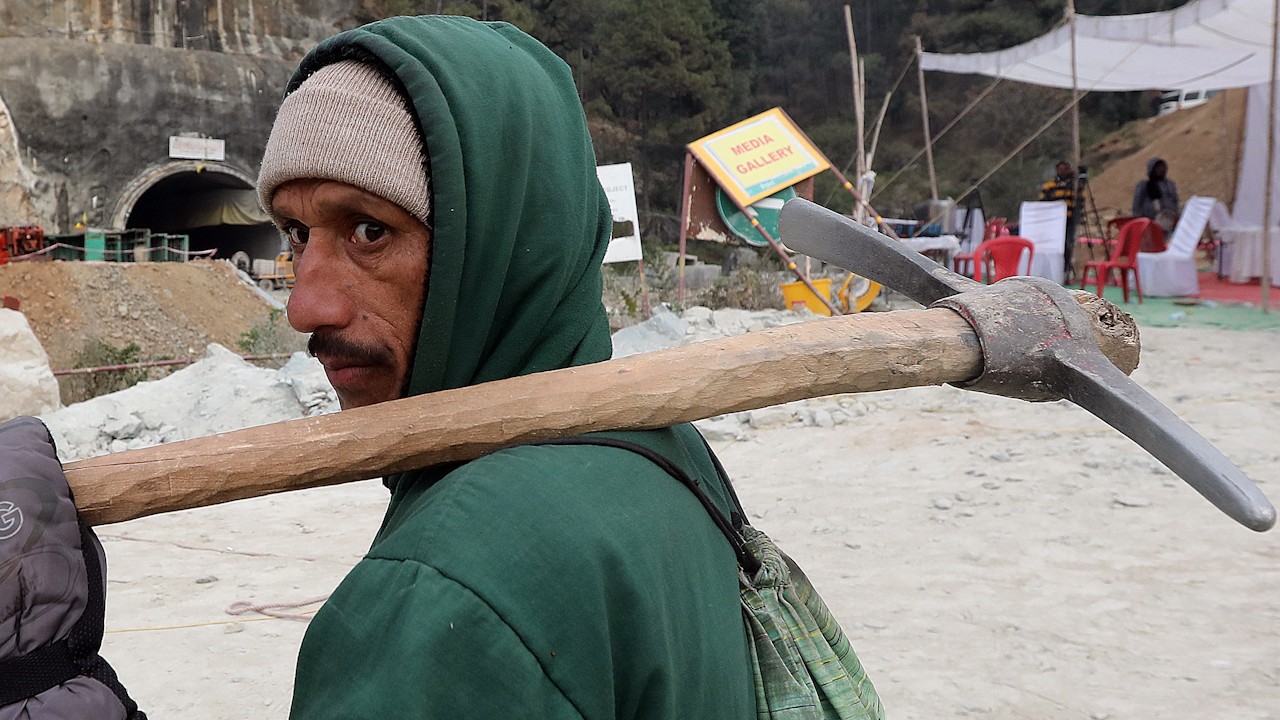“It was a difficult task, but for us nothing is difficult,” said a beaming Firoz Qureshi, one of the miners, standing with his fellow workers outside the tunnel, their faces patched with white dust after overnight drilling.
Inside the ‘rat hole’ mines where Indians risk their lives to find coal
Inside the ‘rat hole’ mines where Indians risk their lives to find coal
The “rat miners” started working late on Monday after a second drilling machine also broke down with 15 metres out of 60 metres still left to reach the trapped men.
They worked in two teams of three each, with one person drilling, the second collecting the debris and the third pushing it out of the pipe.
They said they had worked for more than 24 hours.
“When we saw them inside the tunnel after the breakthrough, we hugged them like they were family,” said Nasir Hussain, one of the six miners.
“Rat-hole” mining is a hazardous and controversial method used extensively in the northeastern state of Meghalaya to extract thin seams of coal before an environmental court in 2014 banned the practice because of environmental damage and many fatalities.
Some of the miners involved in the rescue operation said they were not involved in coal mining and got their training in Delhi.
The name comes from its resemblance to rats burrowing pits into the ground. The pits are sized just enough for the workers, often children, to descend using ropes or ladders to extract coal – often without safety measures and proper ventilation.
13 young miners feared dead in India’s remote northeast
13 young miners feared dead in India’s remote northeast
At least 15 miners were killed in one such “rat hole” mine in Meghalaya after being trapped for more than a month until January 2019 – one of the many tragedies in the state where rights group say 10,000 to 15,000 have died in such mines between 2007 and 2014.
The practice became illegal in the 1970s, when India nationalised coal mines and gave state-run Coal India a monopoly.
Still, many small mine owners continued to employ short people or children to illegally extract coal and the federal government did not interfere, given the state’s remote location and the low quality of its coal.


